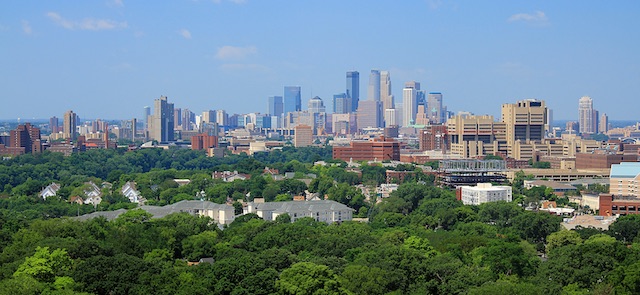
By Sierra Club North Star Chapter intern Catherine Pokorny and Land Use and Transportation Program Manager Joshua Houdek
Late last year, Minneapolis approved a landmark housing plan, Mpls 2040, which will guide the city’s growth over the next 20 years. This plan is the most ambitious upzoning initiative ever undertaken by any U.S. city. The Brookings Institution proclaims Mpls 2040 as "The most wonderful plan of the year," and Minneapolis planning commissioner Sam Rockwell says the plan could place Minneapolis at the forefront of U.S. climate action.
So what’s all the excitement about? Perhaps the NY Times says it best with its headline: Minneapolis, Tackling Housing Crisis and Inequity, Votes to End Single-Family Zoning. By allowing the construction of triplexes in every neighborhood, and dramatically changing zoning to allow greater housing density, this blueprint lays out a more “green” future for the city. Denser development along transit corridors, for example, will help eliminate the economic need to own and maintain a car. One of the best ways to reduce carbon emissions to encourage people to live in neighborhoods friendly to transit, walking, and riding bikes.
Mpls 2040 also addresses equity and the city’s history of housing segregation in important ways. Minneapolis has a long history of redlining and racial segregation that has kept low-income communities and people of color on the fringes. Restrictive deed covenants, racially isolated public housing projects, and discriminatory rental and real estate practices were used by landlords and real estate developers to segregate sections of Minneapolis based on race. Although these practices are now illegal, they facilitated the development of institutionalized racial inequalities that persist in the city today. Mpls 2040 takes crucial steps to dismantle these historical inequities by upzoning has the potential to allow new people of all races and income levels to move in to all neighborhoods across the city. But other important tools need to be fully implemented to expand affordable housing, such as inclusionary zoning.
The plan does more than address housing. It requires Minneapolis to rewrite its climate action plan to put the city on a path to carbon neutrality by 2050. It sets a framework for creating more affordable and transit-friendly neighborhoods for our diverse array of current and future residents -- something that, in turn, will encourage more people to live more sustainable lives in a vibrant city. It’s also important to note that although Minneapolis continually ranks top in the nation for its prized park system, protecting green space and ensuring access to “nearby nature” is a priority.
Ultimately, Mpls 2040 represents an important shift in perspective to a mindset of “we all do better when we all do better.” Without reframing our development policies, business as usual will continue to place a disproportionately high burden onto people of color, low-income residents, our natural environment, and the climate. It’s our hope that this new plan for Minneapolis encourages change in communities across the state and the nation.